
California's student body is diverse
California has the largest population in America, with diversity second only to Hawaii. Diversity has many forms, and this lesson explores several of them — Ethnic and racial diversity, linguistic diversity, religious diversity, sexual orientation, and gender identity.
In This Lesson

How many students attend school in California?
How many Latino students attend school in California?
What ethnicities make up California's student body?
What is a Diversity Index?
How many California students are learning English?
Are California schools linguistically diverse?
How many California students are undocumented?
Why can non-citizens attend public schools?
What is Plyler vs. Doe?
How many students are religious?
How many students are gay or bisexual?
How many students are transgender?
▶ Watch the video summary
★ Discussion Guide.
About 6 million of California's nearly 40 million residents are students in K-12 schools. Relative to other states, California's population is fairly youthful.
Ethnic and racial diversity
People from all over the world move to the Golden State to live, work, and learn. People also move away, as summarized in a data-rich visual report from CalMatters titled California Migration. In 2019, California's level of population inflow/outflow was generally comparable to other states according to the CalMatters analysis, but the demographic history of the state has been dominated by growth through immigration.
Over a period of roughly 30 years, the state’s K-12 schools added about 2 million Hispanic/Latino students, accounting for all of the net growth in California K-12 enrollment. More than half of K-12 students in the state are Latino.
Over ~30 years, California's student body grew by more than 2 million Hispanic/Latino students. This huge shift accounted for all of the net growth in California enrollment.
California's student body is very different than that of the United States as a whole, as this chart shows:
Diverse, but not necessarily blended
There is no clear consensus about the “right” terms to use in connection with racial/ethnic identity groups. Over time, accepted terms have shifted, for example from Negro to African-American to Black, and from Latino to Latino/a to Latinx to Latine to the officially-adopted term “Hispanic or Latino”. You will see a variety of terms in Ed100 for three reasons:
1) Where Ed100 quotes from a source, we use the source’s terms.
2) The Census Bureau’s official guidance (SPD #15, 2024) has changed.
3) Our lessons evolve over time as we review and revise them.
As a whole, the student body of California is impressively diverse. In practice, people tend to live in clusters.
For example, only a tiny percentage of California's total student body is Armenian or Persian, but these are sizable cultural groups in Glendale. In Pacifica, many students speak Tagalog. In Westminster, many students speak Vietnamese. Yuba City is home to many Punjabi speakers.
San Francisco Unified School District has a diverse student body overall, but each school is its own community. Some schools are very diverse and others less so. In southern California, more than 250,000 students attend schools where more than 95% of students are Latino.
Demographers often measure ethnic diversity using the Diversity Index, a statistical evaluation of the odds that two people selected at random from a sample will be of a different ethnicity. Statewide, California's diversity index in 2023 was 69%, second only to Hawaii.
Students attending public K-12 schools in California are less ethnically diverse than the population as a whole, with a diversity index of 46%. Obviously, there's a big difference between statistical diversity at the state level and lived experience as an individual. You can check the diversity index of your school and district on Ed-Data.org.
California's linguistic diversity
Nearly half of California’s students speak a language other than English at home. The vast majority successfully learn English through their education; less than a quarter of California’s students are classified as English Language Learners (abbreviated EL or ELL), still in the process of reaching proficiency in English.
California’s public schools educate students from virtually every cultural and linguistic background on the planet.
Most of California's English Learners speak Spanish at home, but any given school might have a cluster of English Learners who speak Vietnamese (1.85% of English Learners), Mandarin (2.07%), Arabic (1.41%), Cantonese (1.09%), Russian (1.31%), or any of dozens of other languages. (Click image for 2023-24 data.)
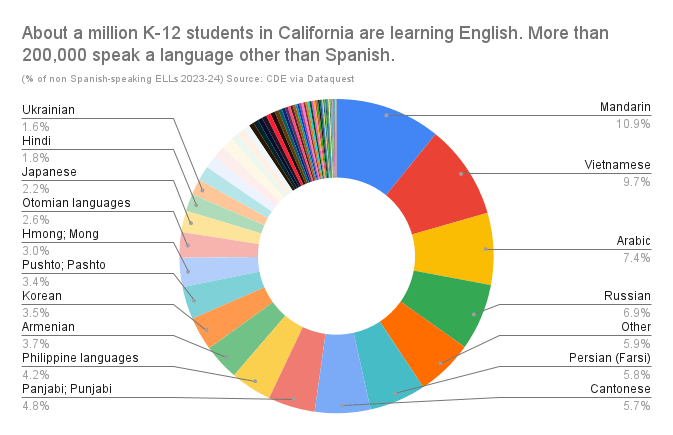
Immigration status diversity
How many students are undocumented?
The biggest changes in California demographics have been driven by immigration, primarily from Mexico. Statistics regarding the immigration status of California’s students and their families are imprecise. As discussed in Lesson 2.9, undocumented students are a small part of this shift, accounting for perhaps one in every 30 students enrolled in California public schools.
In 1982 the US Supreme Court ruled 5-4 in Plyler v. Doe that immigration status may not serve as a condition for enrollment in American public schools. Access to public education is open to all students residing in the US, regardless of immigration status. This right includes higher education; the California Dream Act extended in-state tuition benefits to all residents. After about a decade of litigation, this policy was upheld by a unanimous ruling of the California state Supreme Court in 2010.
Religious identity
 Pew Research studies the religious affiliation of adults.
Pew Research studies the religious affiliation of adults.
Most young people adopt the religious affiliation of their parents. It follows that California's religious diversity reflects the history of immigration to the state. Catholics are the largest single group, reflecting the long history of immigration from Latin America. In 2023, Pew research highlighted the growth of religious non-affiliation. For more information about religious diversity in California, visit the Pew Research Center.
Sexual Orientation
California has played a leading role in moving the American public toward acceptance of another kind of diversity: sexual orientation and gender identity. For most young people, the struggle for marriage equality is history. Students are likely to know teachers or other adults who don't conceal their orientation.
The Williams Institute, a think tank at the UCLA School of Law, studies changing public views of sexual orientation and identity. What percentage of adults are gay, bisexual, or something else? What can be reasonably predicted about the future identities of today's students? It's hard to know, partly because people don't always feel inclined to disclose their feelings to themselves, much less some random researcher!
Gender Identity
Part of the experience of growing up is figuring yourself out, including sexual orientation and gender identity. In the past, these topics were widely taboo, but with each generation, the levels of acceptance and candor appear to be roughly doubling:
These big numbers, in total approaching a fifth of the youngest adult generation, are driving new understanding. In terms of sexual orientation and gender identity, American society is far more diverse than it lets on.
School systems play a critical role in supporting all children through their adolescence, in part by encouraging them to accept and respect themselves, as well as people different from themselves.
The SAFETY Act, effective Jan 1, 2025, prohibits school districts from requiring staff to disclose a student’s sexual orientation or gender identity. The law also protects school staff from retaliation if they refuse to notify parents of a child’s gender preference. Opponents are trying to overturn or invalidate this law.
This page was updated September 2025.
CHAPTER 2:
Students...
-
Students...
Overview of Chapter 2 -
Diversity
The Changing Face of America's Students -
Poverty and Race
How Do Students' Backgrounds Affect Their School Performance? -
Health and Education
What Can Schools Do? -
The Role of Parents
Education and Families -
How Does Education Change
Inputs and Outcomes -
Motivation
What Motivates Students? -
Special Education
Why Not Teach All Kids Alike? -
Child Protection
Intervention and foster care -
Undocumented Students
Education vs. Documentation -
Student Leadership
Student Voice in Schools
Related
-
Are Schools Improving?
Progress in Education -
Poverty and Race
How Do Students' Backgrounds Affect Their School Performance? -
Undocumented Students
Education vs. Documentation -
Literacy in California
Ensuring All Kids Can Read, Write and Speak English -
How do Kids Become Bilingual?
World Language Learning in California Schools
Sharing is caring!
Password Reset
Search all lesson and blog content here.
Login with Email
We will send your Login Link to your email
address. Click on the link and you will be
logged into Ed100. No more passwords to
remember!









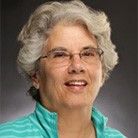
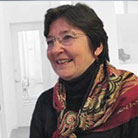
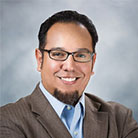
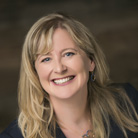

Questions & Comments
To comment or reply, please sign in .
Jeff Camp - Founder September 23, 2025 at 8:55 pm
Jeff Camp - Founder June 2, 2024 at 3:41 pm
Carol Kocivar June 5, 2022 at 4:01 pm
https://socialinnovation.usc.edu/segregation/
Ami Admire November 3, 2021 at 9:37 pm
Alan Ham July 23, 2020 at 10:25 am
David Shahal May 22, 2019 at 12:12 pm
nkbird July 27, 2018 at 12:53 pm
Alma Cacho May 2, 2018 at 9:53 am
Jeff Camp May 5, 2018 at 10:25 pm
francisco molina February 24, 2019 at 9:50 pm
Megan Finlay March 4, 2020 at 12:41 pm
Jeff Camp March 4, 2020 at 1:06 pm
Robert Crowell May 2, 2018 at 9:16 am
pamela_cfo December 5, 2017 at 9:45 pm
Carol Kocivar December 2, 2017 at 11:59 am
https://www.advocate.com/youth/2017/11/12/california-first-state-approve-lgbt-inclusive-history-books-k-8-schools
Jeff Camp - Founder June 23, 2016 at 10:39 am
norburypta February 29, 2016 at 6:56 pm
Maybe sorting this out is not productive to the discussion.
johanna.smith.nilsson May 21, 2015 at 11:34 am
The changing demographics in schools mean that teachers and schools need to change the ways that they approach education. It is increasingly important for more teachers to be certified in teaching English Learners (ELs) and in bilingual instruction.
I don't actually know how many students in my district zone attend charter/private schools. A quick search didn't show any obvious answers.
tonyammarquez April 28, 2015 at 8:50 am
johanna.smith.nilsson May 21, 2015 at 10:59 am
Mark MacVicar April 24, 2015 at 3:00 pm
geecookie2011 April 18, 2015 at 6:38 am
jenzteam February 27, 2015 at 8:02 am
johanna.smith.nilsson May 21, 2015 at 10:58 am
Just last year a law was proposed by Senator Ricardo Lara to repeal Prop 227 (http://sd33.senate.ca.gov/news/2014-02-20-senator-lara-announces-bill-supporting-multilingual-education). This is a really important bill because many studies show that bilingual and dual-immersion are overall more successful for reclassification (http://cepa.stanford.edu/news/do-latino-english-learners-do-better-bilingual-or-immersion-programs).
Up until very recently California didn't offer a secondary credential that is solely for teaching English Language Development. The only way to teach ELD was for teachers to get a credential in a different subject and then get an extra clearance to teach English Learners (now it's a part of every secondary ed credential) or to get a bilingual certification. Now that ELD has its own credential, hopefully more teachers will be prepared to teach our increasingly diverse student population!
Eve Green February 4, 2015 at 11:27 pm
johanna.smith.nilsson May 21, 2015 at 10:08 am
Arun Ramanathan March 10, 2011 at 1:56 pm
This is a massive generational change and one that should be viewed in this increasingly globalized world as a strength. In particular, if we viewed speaking multiple languages as a strength vs. a weakness and invested in it vs. trying to eliminate it, CA would be leading the nation in bi- and multi-lingualism.
Now, based on recent census figures, we are a very different CA. Our Latino and Asian populations are growing while our White and African-American populations are either static or declining. Our population is shifting to the east vs. the more expensive west. And our students are increasingly poorer and more needy, espcially in these difficult economic times.
In our current climate, with the stranglehold the extremes of our parties and longtime lobbyists and staffers hold on Sacramento, we are barred from the type of structural change particularly in our education system that we need to address these massive shifts and focus on the needs of children. But at very least one thing is certain - demographic change of this magnitude will promote electoral change.
Steven N June 20, 2014 at 3:45 pm